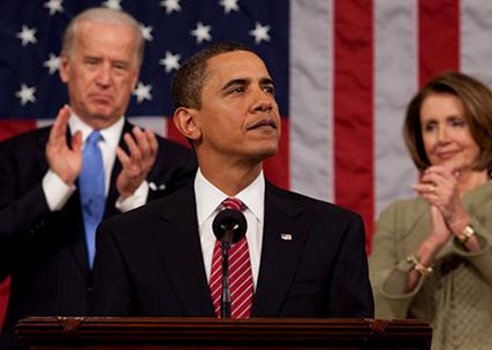Reading time: About 2 minutes
I read widely, watch movies and listen to the radio. Here, catch an interesting piece of figurative language I’ve encountered recently. Today’s choice comes from the Obama 2012 speech that wrapped up the election.
I had no vote in this week’s US presidential election. I’m a Canadian. But I’m a fanatic for elections (I have a degree in political science) and I watched the results roll in with as much interest as the most ardent party member. And I was utterly transfixed by the speeches.
Barack Obama’s was superb. I’ve done enough speaking myself to be able to recognize that his words AND his delivery both contributed to his success. But, curious as to how much weight I should allocate to each, I tracked down the complete text yesterday morning. My first task? I ran it through readability statistics.
The readability of his speech was pretty much in the grade 8 range (which is smart for nation-wide addresses) but the most remarkable thing was the average length of his sentences: 18 words. This is EXACTLY the number I tell my clients to aim at. Funnily enough, many people tell me they can’t write that way. Now I can say, if the president can do it, so can you.
But what I liked best about the speech was how he used concrete images to make his points. Here’s a section in which he did that:
If you ever get the chance to talk to folks who turned out at our rallies and crowded along a rope line in a high school gym, or saw folks working late in a campaign office in some tiny county far away from home, you’ll discover something else.
Don’t you immediately visualize that school gym with its rope line? (The extra detail of the “rope line” cements the image.) And what about that late-working campaigner? I don’t know about you but I see the dusty, poster-board filled office with a dedicated worker hunched over his desk illuminated by a single light, almost as if it were a scene in a movie.
The speech also uses a great deal of anaphora (repetition) but I thought the single most compelling passage showed off his superb understanding of the figurative device paradox. Here it is:
This country has more wealth than any nation, but that’s not what makes us rich. We have the most powerful military in history, but that’s not what makes us strong. Our university, our culture are all the envy of the world, but that’s not what keeps the world coming to our shores.
What makes America exceptional are the bonds that hold together the most diverse nation on earth. The belief that our destiny is shared; that this country only works when we accept certain obligations to one another and to future generations. The freedom which so many Americans have fought for and died for come with responsibilities as well as rights. And among those are love and charity and duty and patriotism. That’s what makes America great.
At the end of the speech, I visualized a fireworks display — no matter how superbly it starts, the pyrotechnical experts always save a flurry of big bangs for near the end. KA-BOOM. This was quite a show.
Oh, and by the way, when I read the speech on the page, I decided that, even though it was incredibly well written, the words paled before the masterful delivery. If you missed it, you can watch the whole thing here.
[Photo credit: Public domain. Cropped.]


